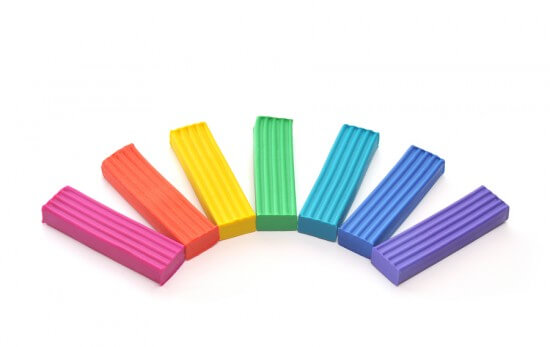
Polymer clay is a fun craft medium to work with. Its versatility can inspire your creativity with nearly endless possibilities. Best of all polymer clay is affordable and easy to find at your local craft store. However there are certain techniques and tips that will make working with polymer clay both easier and more enjoyable. Some of these are:
- Polymer clay is soft until it is cured, which is done by baking the piece in your oven for 20-30 minutes, usually at about 270 degree Fahrenheit. After the baking, the clay is then cured and remains hard forever.
- Working with polymer clay is very safe, but it is important that you understand that you should not eat while working with the clay. It is crucial to wash your hands well after using it.
- You may be surprised to learn that some of the most common tools that are used for polymer clay are also kitchen tools (a pasta machine, garlic press, rolling pin). However it is critical that you never use your tools that have touched the polymer clay for anything else in the kitchen. Once it has been used for polymer clay it should be devoted to be a clay tool forever.
Beginners should understand that before working with polymer clay, it needs to be conditioned. Conditioning means you need to make the clay very soft, pliable, and easy to work with. Keep in mind that a lot of clays are now being sold which are pretty soft and do not require much conditioning. However even if the clay is soft right out of the package, it is still very important to condition it for a while in order to activate it. Unconditioned clay can break easily after being baked.
To condition the clay, you should break off a small piece and begin rolling it in your hands. Your hands will warm it up and then it will start getting soft the more you work with it. A pasta machine can also help condition the clay if you run the clay through it at the largest setting. Then you should take the sheet and roll it in half and run it through again. Another technique that can be used is to break up the clay in a food processor. The heat of the blades will help the clay to soften up. All the bits of clay can then be combined together and worked with in your hands. Keep in mind that if the clay is old, or has been exposed to UV light, it may take a very long time to condition which can be difficult and quite tiring. Be sure to store your clay in a dark, cool place to avoid this problem. Another technique is to put the clay in a sealed baggy and let it sit in some warm water for about 20 minutes before working with it, to speed up the conditioning time. You will know the clay is conditioned properly when it does not crack or crumble any more.
When working with polymer clay, you may also find it helpful to work on a smooth ceramic tile or a piece of cardstock. This serves two purposes. The smooth surface is to roll balls, logs, and make smooth sided shapes, and avoid fingerprints being left on the clay. In addition the piece can be left on the tile or cardstock and placed on a cookie sheet. The paper will not burn at 270 degrees F and this is a good way to protect your cookie sheet.
Many crafters have noticed that it is hard to remove your fingerprints after working with polymer clay. Some people have tried wearing tight fitting disposable latex gloves while working with the clay. Other crafters suggest brushing your piece often with a little dusting of talcum powder to help keep prints at bay. You can also sand your piece with very fine grit sandpaper after the clay is cured. This will allow the clay to be buffed smooth. With a little practice and experience you will find it easier not to leave fingerprints.